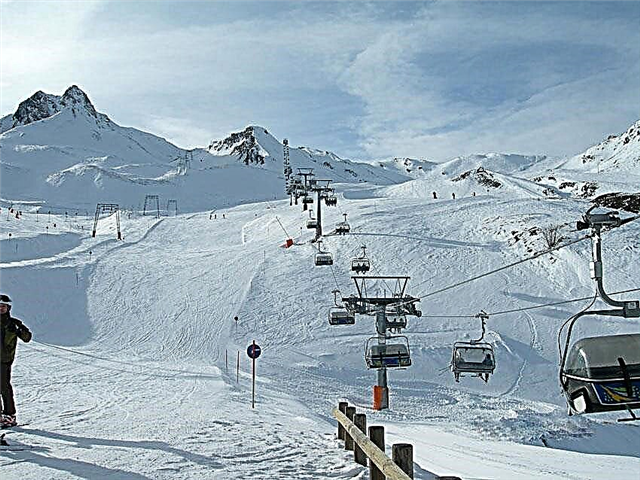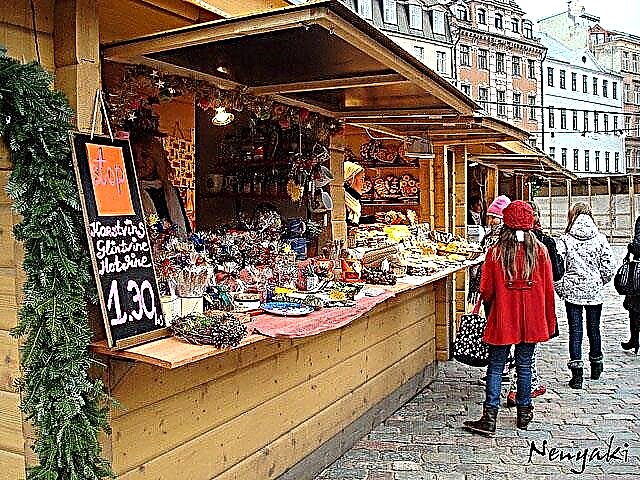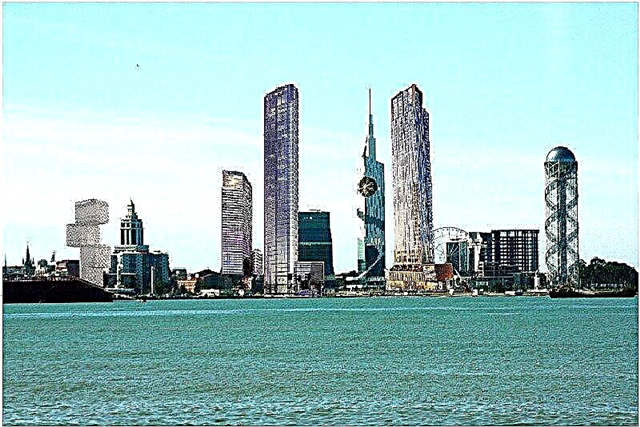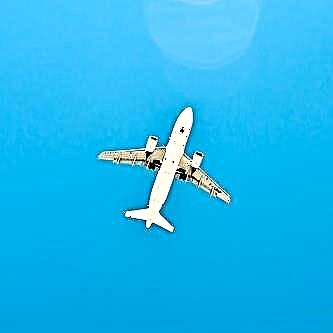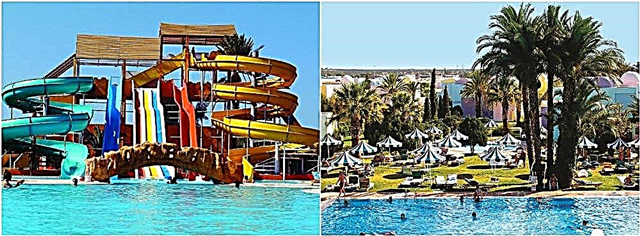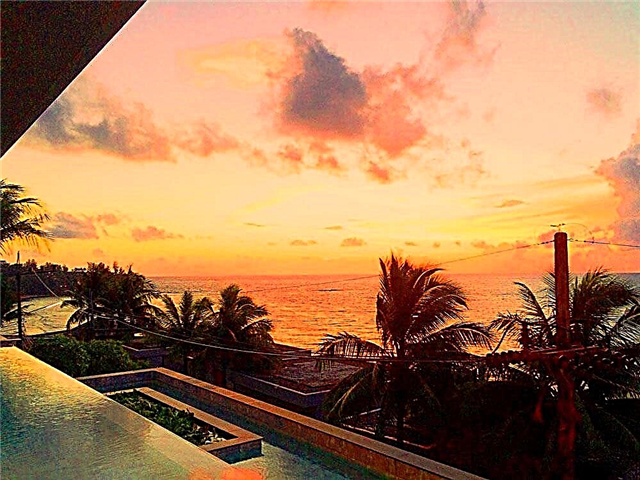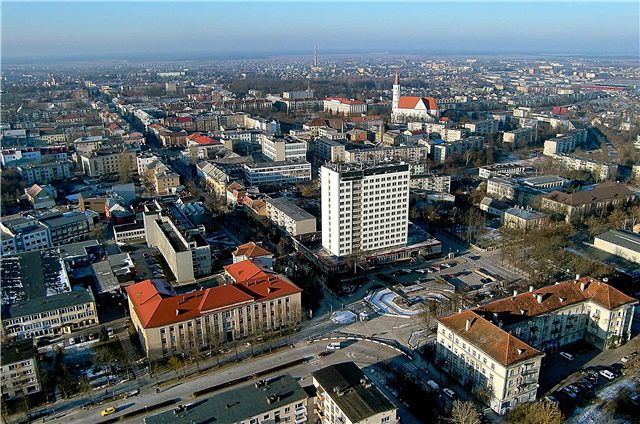The largest cities in Lithuania are Vilnius and Kaunas with a population of over 200 thousand people. The most ancient cities of the country are Siauliai, Klaipeda and Palanga - the first mention of them dates back to the 13th century. These cities are popular with tourists. They retain the historic buildings and charm of old European cities. Klaipeda and Palanga are popular resort towns, while Šiauliai is notable for its culture and architecture.
The architectural features of the cities were influenced by historical facts. Some cities of the country often changed hands, they were owned by Prussia, Germany, the Russian Empire and the USSR. European classicism in such cities is combined with neo-Gothic, and residential buildings were built in the style of Soviet asceticism. Most Lithuanian cities are multinational, with Lithuanians, Poles and Russians in the population.
The largest cities in Lithuania
List of the largest cities in terms of population in the country.
Vilnius
More than 60% of the capital's population are Lithuanians, slightly less than 20% are Poles, and 12% of the city's residents are Russians. Founded in the XIII century. The former name is Vilna. The historic city center is included in the UNESCO heritage list. There are interesting medieval buildings in the Baroque and Classicism styles. About half of the city's area is occupied by green spaces, so it has an excellent ecology.
Population - 574 147 people (2018).

Kaunas
The second largest city in the country, founded in the XIV century. The city is popular with tourists - every year thousands of tourists come to see its architecture, cultural and natural places. Among the medieval buildings, the main attraction is the Kaunas Fortress. Theaters and museums in Kaunas are not inferior to those in the capital. The landscapes of Kaunas reservoir are interesting from natural places.
Population - 286 700 people (2019).

Klaipeda
Located near the Curonian Lagoon and the Baltic Sea, it is a large seaport. At different periods of its history, the city belonged to the knights of the Teutonic Order and Germany. This was reflected in the rich multi-style architecture of the city. It is not for nothing that the city of Klaipeda is called the tourist pearl of Lithuania. On the left bank of the Dange River is the historic Old Town, on the right - the modern center.
Population - 149 452 people (2020).

Šiauliai
Industrial and cultural center of the country. Among the unique museums in the city, the bicycle museum and the cat museum stand out. The architecture of the city is represented mostly by modern buildings. Of the old buildings, the most remarkable is the Cathedral of St. Peter and Paul of the 17th century, as well as the city hall. Vilnius pedestrian street is home to many first-class hotels, cozy cafes and souvenir shops.
Population - 107 086 people (2018)

Panevezys
Founded at the beginning of the 16th century. A small village was formed around a wooden church. Since the 19th century, the city has been developing rapidly and has become one of the largest economic and trade centers in the country. At the same time, the city begins to actively build up, the main style of buildings in the city center is European classicism. Tourists are interested in one of the longest narrow-gauge railways in Europe.
Population - 88 678 people (2018)

Alytus
Located in the south of the country, on the banks of the picturesque Neman River. The settlement was founded in the XIV century, the status of the city was received in the XVI century. During the Second World War, many buildings in the city were destroyed, and thousands of people died in a major tank battle. A memorial obelisk and a monument to the Angel of Freedom have been erected in their honor. Every year Alytus hosts the festival of flowers and the festival of choral singing olines.
Population - 51 thousand people.

Mazeikiai
A small town founded on the site of a village of 13 houses. The industrial and cultural life in the city developed after a section of the railway was built through it. One of the oldest buildings is the church of St. Spirit built in 1894. The church of St. Francis of Assisi, it often hosts concerts of Christian music.
Population - 40 thousand people.

Marijampole
The ancient buildings of the city were badly damaged during both world wars. Modern architecture is represented by the building of the station in the form of a castle in the Art Nouveau style with elements of the Gothic. Many green parks with fountains give the city a favorable look. It is better to inspect them in the summer. The city of Marijampole is known in Europe for its large used car market.
Population - 35 thousand people.

Telšiai
Located in the northwest of the country, on the shores of Lake Mastis. The Telšiai settlement was first mentioned in documents in the 15th century. It is unofficially considered the center of the ethnographic region of Samogitia. More than a thousand residents of the city consider themselves to be this nationality. In the center of the city there is a stone-paved Market Square, where the most interesting historical buildings of the city are concentrated.
Population - 29 thousand people.
Utena
One of the oldest cities in Lithuania, known since 1261. It is located in a picturesque corner of nature, on the territory of the city there are almost 200 lakes, including the longest lake in the country - Aisyatas. Of the old buildings, several buildings of the early 19th century have survived - the Church of the Ascension of Christ and the city's post station. Also, guests of the city will be interested in the Aukštaitija National Park with ethnographic villages.
Population - 28 thousand people.

Jonava
Founded in the 18th century, and in the 19th century it gained fame as a city of furniture makers. Most of the city's artisans were carpenters and joiners. Over time, a small match factory has become a large furniture factory, which still supplies quality products to different countries. In 1989, there was a chemical contamination of the area after an accident at a production association.
Population - 27 thousand people.

Ukmerge
It was called “the most Jewish city in Lithuania” - at the end of the 19th century, the city's population consisted of 60% of Jews. During the Second World War, almost all of them died during mass shootings. However, the city center has preserved the heritage of Jewish architecture - houses of worship, schools, shops. At the entrance to the city there is a monument to the symbol of the city - a girl who stands on a wolf.
Population - 26 thousand people.

Taurage
Founded in the 15th century as an estate. The manor house, which has survived from those times, is an architectural monument. For several centuries the city belonged to the Lithuanian princes Radziwills, Prussia, and the Russian Empire. Since 1920 it has been a part of Lithuania. An interesting attraction is the Taurage Castle, which houses a history museum. Walks along the embankment of the Jura River are popular.
Population - 26 thousand people.

Kedainiai
Founded in 1590. Several historical buildings - the town hall, temples, a pharmacy, a gymnasium - have survived to this day in the area of the Old Town. The 15th century Gothic stone church of St. George. The oldest museum of local lore in the country is located in Kėdainiai, it was opened in 1921. It houses about 36,000 exhibits that tell about the history of the region.
Population - 25 thousand people.

Plunge
The most famous architectural monument of the city is the estate of Oginsky, the famous composer. An art museum is currently located in the prince's palace. A beautiful park with a pond and a fountain is laid out around it. Visitors from all over Lithuania and other countries come here. There is a cemetery near the city, where 1,800 Jews were buried who were shot during the Holocaust during the Second World War.
Population - 22 thousand people.
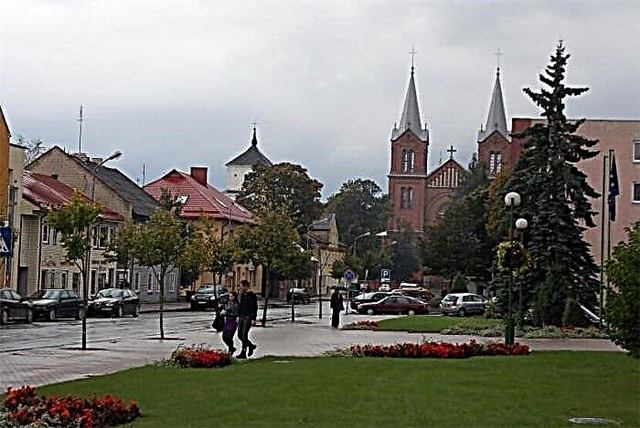
Silute
The city was founded as a fish market in 1511. During its long history, the city belonged to both Germany and Prussia. During the Second World War, concentration camps for prisoners of war and Jews were located near the city. Now it is a small town.Infrequent tourists celebrate its "typically German architecture", cleanliness and comfort. The buildings of churches and the estate of G. Shoya are interesting to see.
Population - 20 thousand people.

Radviliskis
The city was founded in the 15th century by the Radziwills princes. Then the estate was called Radzivilishki. Most of the city's residents work on the railroad. It was its construction that became the impetus for the development of the city. An architectural monument is the bell tower of the wooden church of the Immaculate Conception of the Virgin Mary, built in 1878. Also in the city there is a sculpture of the goddess Nike by Mazuras.
Population - 18 thousand people.

Visaginas
More than half of the population is Russian. It received the status of a city only in 1994. Among the architectural monuments are the stele with a crane - the symbol of the city, the church of St. Paul, St. the healer Panteleimon. Every year, the city hosts a country music festival that brings together guests and musicians from all over the world. In July there is an unusual competition of teams on boats "dragons".
Population - 18 thousand people.

Kretinga
Located in the northwest of the country. The city is remarkable for its unique sights. The Winter Garden of the Kretinga Museum contains thousands of trees, plants and flowers. The Arvydas Museum is located in the open air; unusual exhibits are housed in the Museum of the Absurd. Interesting are the Tyszkiewicz Palace and the Franciscan Monastery. There is a fur farm in the city where blue foxes and minks are bred.
Population - 17 thousand people.

Gargzhdai
The settlement has been known since 1253. It has been a city since 1792. Gargzdai is a typical city for the country that does not stand out for anything remarkable. During the First World War, almost all the old wooden buildings burned down. In Soviet times, the buildings necessary for the functioning of the city were rebuilt, but there are no interesting architectural solutions in the modern appearance of the city.
Population - 16 thousand people.

Palanga
A resort town located on the shores of the Baltic Sea. The mild climate and good infrastructure contribute to the fact that many tourists come here on vacation in the summer. The symbol of the city is a pier, built at the end of the 19th century and sinking into the water for 500 meters. Attractions - the amber museum, the old pharmacy building from 1827, the Church of the Assumption of the Virgin Mary with an observation deck.
Population - 15 thousand people.

Birzhai
It received the status of a city in 1589. Since that time, an architectural monument has been preserved - a castle-fortress of the former owners of the city of the Radziwills. There are about 9 thousand karst sinkholes in the city, and the city's mineral resources have long been used by residents for treatment. The city is also famous for its brewing traditions. Beer brewed in the city's home breweries is served in the best restaurants in Vilnius.
Population - 13 thousand people.

Elektrenai
It is considered the youngest city in Lithuania. Founded in 1961, simultaneously with the start of the construction of the Lithuanian State District Power Plant. The power plant is still in operation, but only at 3% of its capacity. The city has the best indoor ice stadium in the country; the local hockey team has repeatedly become the champion of Lithuania. An interesting amusement park, opened in 1976.
Population - 13 thousand people.

Kursenai
A small provincial town in the north of the country on the banks of the Venta River. The area of the city is 11.92 km². Founded in the 16th century, the first wooden church was built at the same time. The stone church appeared in the city only in 1824, later it was destroyed during the hostilities. In 1933, the Church of St. John the Baptist appeared in its place. A monument to the writer Ivinskis is erected on the main square.
Population - 13 thousand people.

Jurbarkas
Located on the banks of the Neman River. A long bridge has been laid across the river, connecting the town of Jurbarkas with the Šakiai region. It was first mentioned in 1258. The estate belonged to the Russian imperial court, was in the possession of the favorite of Catherine II - Zubov and the princes Vasilchikov. The city has a memorial museum dedicated to the sculptor Vitas Gribas. There are several art objects.
Population - 12 thousand people.


